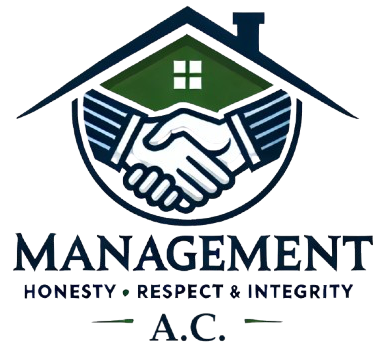
Property management involves a delicate balance between landlords and tenants, and success often lies in understanding best practices while avoiding common pitfalls. At AC Management, we’ve seen it all, and we’re here to share valuable insights to help both landlords and tenants create a smooth and rewarding rental experience.
For Landlords: Best Practices and Pitfalls to Avoid
1. Screen Tenants Thoroughly
Best Practice: A comprehensive tenant screening process is essential. Verify income, conduct background checks, and check references to ensure reliable and respectful tenants.
Pitfall: Skipping this step to save time can result in late payments, property damage, or lease violations. It’s worth investing time upfront to avoid headaches later.
2. Maintain Open Communication
Best Practice: Foster a positive relationship by keeping lines of communication open. Respond promptly to maintenance requests and update tenants on important property matters.
Pitfall: Poor communication can lead to misunderstandings and strained relationships. Tenants appreciate landlords who are accessible and proactive.
3. Keep Up with Maintenance
Best Practice: Regular inspections and proactive maintenance prevent small issues from becoming costly problems. Happy tenants are more likely to renew leases when they see you care about the property.
Pitfall: Ignoring minor repairs can escalate into major expenses and unhappy tenants, potentially leading to vacancies and increased turnover costs.
4. Stay Compliant with Regulations
Best Practice: Ensure your property meets all local, state, and federal regulations. This includes safety codes, fair housing laws, and proper lease documentation.
Pitfall: Overlooking compliance can result in hefty fines and legal disputes. Staying informed and updated is crucial for long-term success.
For Tenants: Best Practices and Pitfalls to Avoid
1. Read Your Lease Carefully
Best Practice: Before signing, thoroughly read and understand your lease. Know your responsibilities, rights, and any rules specific to the property.
Pitfall: Failing to review the lease can lead to unintentional violations, such as late payments or unauthorized changes to the property.
2. Report Issues Promptly
Best Practice: Notify your landlord of maintenance issues as soon as they arise. This helps prevent damage and ensures your home remains comfortable and safe.
Pitfall: Waiting too long to report problems, such as a leaky faucet or a malfunctioning appliance, can worsen the issue and lead to inconvenience for everyone involved.
3. Respect the Property
Best Practice: Treat your rental property as if it were your own. Keep it clean, follow community rules, and communicate any changes you’d like to make.
Pitfall: Neglecting the property or violating the lease terms can lead to penalties, loss of your security deposit, or even eviction.
4. Build a Positive Relationship with Your Landlord
Best Practice: Be transparent, honest, and courteous. A good relationship can result in more flexibility during tough times and a smoother rental experience overall.
Pitfall: Avoiding communication or being uncooperative can lead to unnecessary tension and challenges down the road.
Final Thoughts
By following these tips and avoiding common mistakes, landlords and tenants can create a harmonious relationship that benefits everyone. At AC Management, we’re dedicated to fostering positive interactions and providing support to ensure smooth property management experiences. Whether you’re renting or managing, remember: success comes from collaboration, transparency, and proactive care.
For more advice, insights, and updates, stay tuned to the AC Management Blog!
